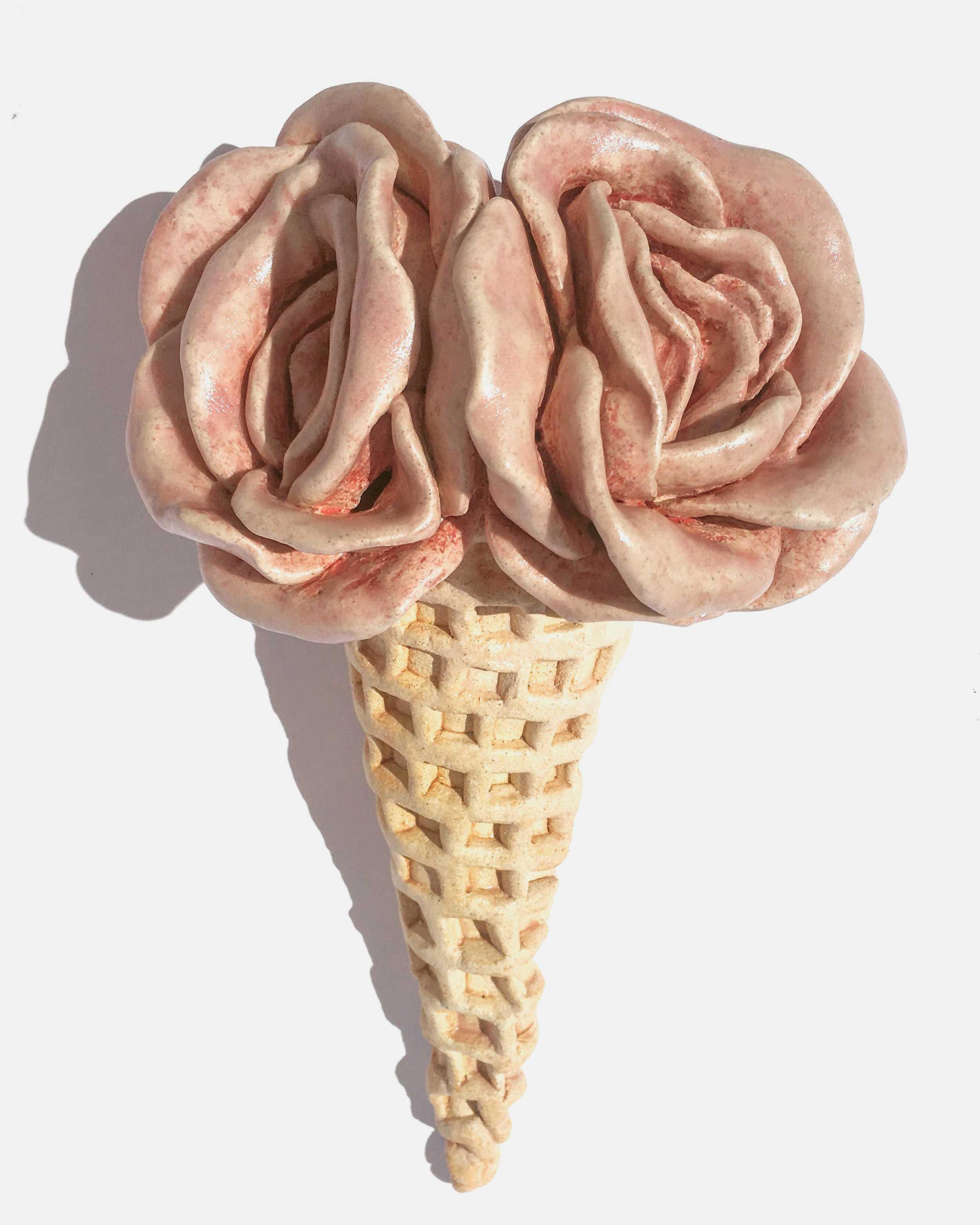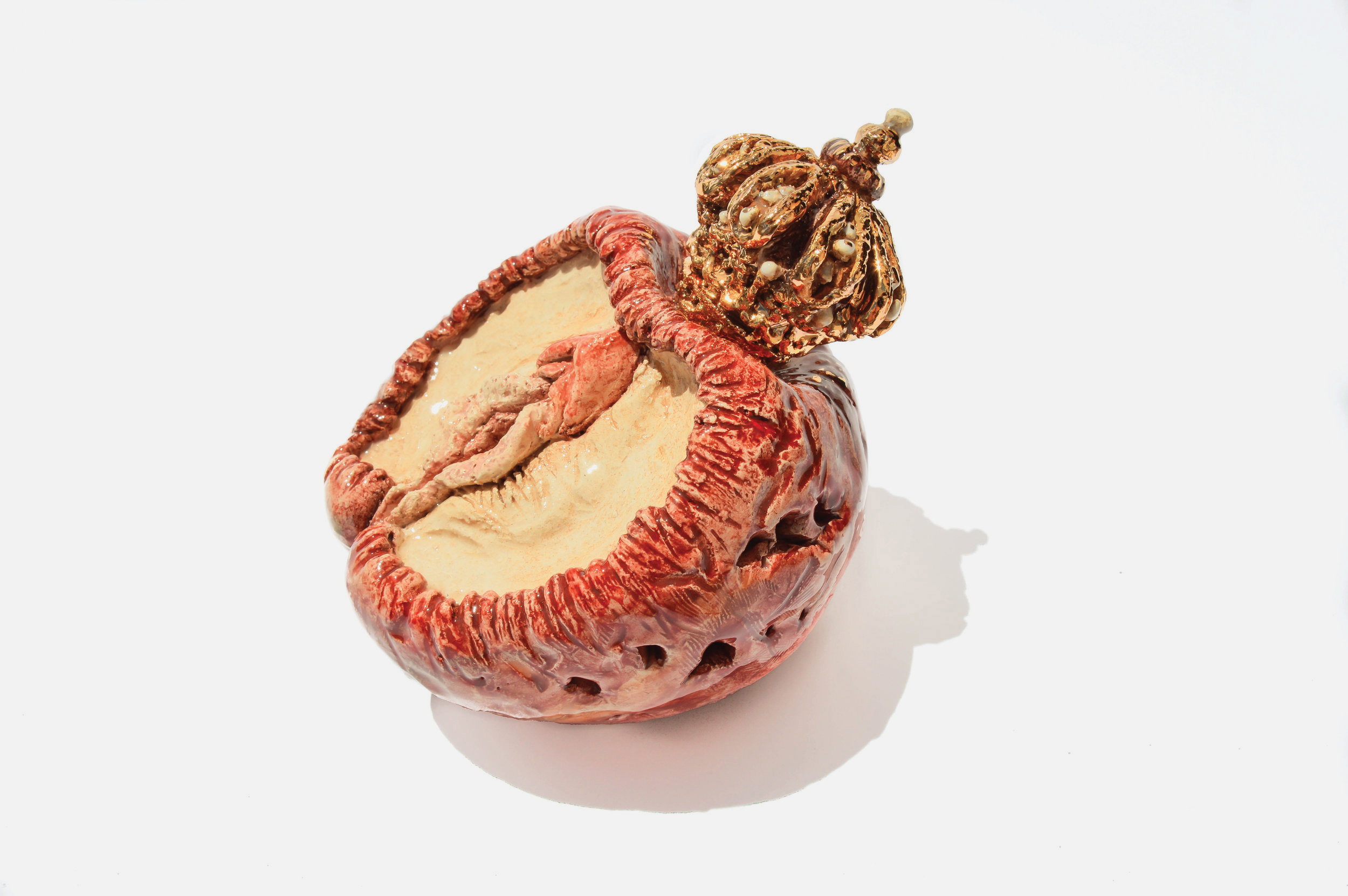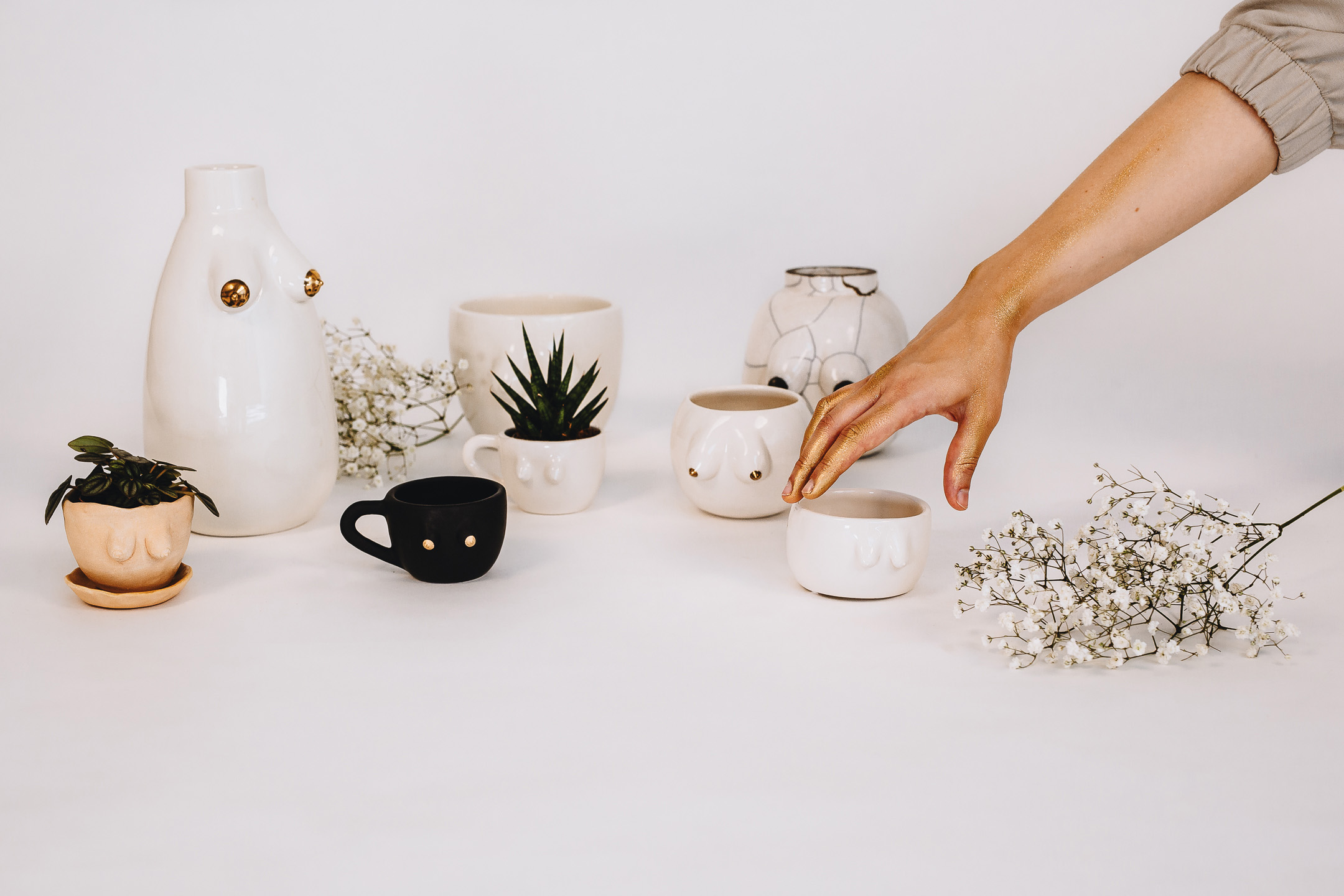One of the most emblematic tourist attractions in Caldas da Rainha is this ex-libris of the city, this monument for people, this attraction that is the Fruit and Veggie Market. But the path that takes you there is ruled by another fruit and vegetable, just as or even more iconic than the market, which fills souvenir windows and ignites cheeky smiles, as much as jawdropping expressions: the phallic ceramics of the area, sovereign when it comes to stealing attention — yes, even more so than the local farmerr' produce. Are your crown jewels ready for this text?
One of the most emblematic tourist attractions in Caldas da Rainha is this ex-libris of the city, this monument for people, this attraction that is the Fruit and Veggie Market. But the path that takes you there is ruled by another fruit and vegetable, just as or even more iconic than the market, which fills souvenir windows and ignites cheeky smiles, as much as jawdropping expressions: the phallic ceramics of the area, sovereign when it comes to stealing attention — yes, even more so than the local farmerr' produce. Are your crown jewels ready for this text?

Earthly Delight, da coleção Flesh Flowers (2017), tudo Ana+Betânia.
Earthly Delight, da coleção Flesh Flowers (2017), tudo Ana+Betânia.
We could even be talking about the crown jewels that is Bordallo Pinheiro's ceramics, immortalized in bowls and plates alongside cabbages and other flora and fauna in a clay paraphernalia that made that geographical point of the West one of the unavoidable centers of artistic ceramics in Portugal. But we're not. Recognized within and beyond borders, this ceramic tradition, known for its naturalistic elements, has been part of the history of the city for centuries, reinforced by the needs and popularity of the Thermal Hospital (created in 1485 by Queen D. Leonor, becoming the most sought after in the country and, thus, a decoy for the other added value of Caldas) and, later on, for the works and nomination of Rafael Bordallo Pinheiro, in 1884, as creative director of the Fábrica de Faianças das Caldas da Rainha — the famous creator of the infamous national icon Zé Povinho (1875), a statuette with both humor and satire, which stereotypically symbolizes the Portuguese people. Bordallo's work is well known and has brought other pottery artists to the area, but he is not the only one conveying humor in dishes, perhaps not even the first. The phallic character of these ceramics in the area has uncertain origins, but the most consensual seems to be that it began with an order by King D. Luís to the Manuel Cipriano Gomes Mafra Factory, in the second half of the 19th century, afterwards continuing the tradition and serving as inspiration for various interpretations by later artists. It is said that when the king visited the factory, he asked the ceramist of the Royal House to make a funny object to amuse his friends, a task that Manuel Cipriano passed on to his collaborator João Pereira — it was he who sculpted a monochromatic phallus with the appliqués, at the bottom, reminiscent of the technique of imitation of moss that still today is multiplied in countless interpretations. The naughty character of the pieces leaves noone indiferent when passing through the windows of the city, having even moved from pottery to gastronomy: finger food has become penis food, with cookies in the shape of dicks (and some titties) occupying a prominent place in the pastry shop as breakfast edibles. The purpose is to entertain, make you giggle, wink a naughty eye to tourists who find it funny, aiming for a souvenir that says “My friend went to Portugal and all I got was this lousy Caldas’ penis.” But… what if it isn't? What if there's more to it than sculpting genitals and other intimate parts into pieces to admire, wear, or drink your morning cappuccino? If you were offered a vagina ice cream, would you still laugh? Why not? Or why even laugh? Is it nervous laughter? And why does our body make us nervous?

Elizabeth, the Virgin Queen, da coleção Tutti Frutti (2016). Ana Betânia.
Elizabeth, the Virgin Queen, da Coleção Tutti Frutti (2016). Ana Betânia.
From what looked like a willie competition, a feminist movement was born. Or it wasn't born there, maybe it built its own parallel path, inspired by the same ideas, but not with the same goal. From the caricatured penises to the more realistic free the nipple & the clitoris approach, the phallic side of Caldas ceramics is coming out of the male genitalia and decentralizing the origin in the portuguese West coast to bring all kinds of human anatomy (with special attention to the female) to works of art, utilities and crockery that serve, not meals, but messages. Ana+Betânia, by Ana Cruz and Maria de Betânia, made Caldas their headquarters for logistical reasons, but they brought a new activist nature to this motivation of sculpting intimacy in collectibles — taking a look at two or three elements of their work is enough to realize that there is provocation, but only to incite dialogue, not to shock. In fact, you can even feel the touch of humor: “The use of these anatomical elements is due to our interest in working on the woman's relationship with her body and the woman-man interaction (female/male). If we sometimes used a more subjective, abstract language, in these pieces [from the project, or collection, or phase, or period, called FEMINA], we wanted to communicate in a very clear language, associating these parts of the body with other visual elements. So we created visual metaphors that contain in themselves (and together) a narrative”, explains the duo coming from the Ceramics laboratory of the Faculty of Fine Arts, in Lisbon, and the Workshops of Ceramics and the Earth, in Montemor-o-Novo, before deciding, in 2017, to concentrate their artistic production in their own studio in Caldas da Rainha. “We can refer specifically to the ideas we wanted to express, which revolved around our discomfort at this time of social limbo that is the beginning of the thirties. An ambiguous, strange terrain, where we felt alienated from what would be the stereotyped expectations for a woman of that age. We were like two teenagers living in the adult world in permanent exclamation and pain. We associated these pains of a puerile emotional state with the pains we experience in adolescence, in our relationship with ourselves, with our body and with men.” That is why they admit that Caldas crockery had no influence on the forms of their works (“In this aspect we would firstly point to the works of Bordallo Pinheiro”, they assure), which in no way removes their relevance as artists and as activists in this phallic area, opening a dialogue about what it means to be a woman today, a natural consequence of their context: “The reasons that were underlining this purpose are due to our circumstance: the fact that we are a duo, all the pieces come from ideas common to both, and the fact that we are women and, as such, we share memories, experiences and moments linked to our nature”, they explain. “Apart from the search for beauty itself, we could have another subject as a basis for reflection, but the truth is that ideas arise from these sharings, which in turn are acts of survival in the search for self (and mutual) understanding, for redemption. Some pieces are, more than catharsis, pure acts of atonement through clay. We do not believe that there is a more adequate raw material to work the fragile, transitory, elusive character of any approach to the female condition. Only with clay can we achieve the magic of modeling something as delicate as a field flower and then making it solid and hard like a stone, resistant through the ages.”
They are not the only ones to open this feminine dialogue through the conversation-fuel that is art. Ana Marta, from the homonymous brand Ana Marta Cerâmica, also shares Caldas as her headquarters — and the desire to expose some questions related to female anatomy. In her aptly titled Mulher-Objeto ["the woman as object"] collection, there are cups and vases with breasts, because it was high-time we grew titties instead of cojones: “I created this collection in a phase of inner revolt”, explains the artist with a degree in Sculpture byt the Faculty of Fine Arts of the University of Lisbon, with a specialization in Ceramic Technology, who later had technical and specialized training at Cencal - Professional Training Center for the Ceramic Industry of Caldas da Rainha, becoming a professor herself there. “I felt that my body, as well as that of so many other women, was not respected and that there was a need to break down prejudices. Therefore, this choice arises from the need to assert an opposition to the way in which the figure of women continues to be portrayed and interpreted. At the same time, I don't want these pieces to become vulgar. The use of gold on the nipples and the quality of the pieces are a way of safeguarding them as objects of art and worship", she explains, adding that "the phallic aspect ends up having an influence in the sense that it makes me comfortable and not embarrassed to represent an intimate part of the female body.” Relatable. After all, those who, as children, never giggled when they saw the representation of the intimate parts of the human body — whether they were well made or poorly designed, the mere idea of a pair of tits or a little dick were enough for a childish grimace —, throw the first pair of knickers. Is there really so much reason to laugh? Only if it conveys a message, which her pieces do: “To normalize a woman's body without obeying imposed standards, to praise and respect it”, says Ana Marta. “More than utilitarian pieces, I want them to be used as cult pieces. (…) All the effort and care I put into the production of these is really aimed at normalizing the anatomy. We all have different and beautiful bodies, no more obeying beauty standards instilled by society”, she claims, not hiding her strong will to “contribute to this change.”

Sele o de objetos da coleção Mulher-Objeto, da Ana Marta Cerâmica. © Rute Leonardo
Sele o de objetos da coleção Mulher-Objeto, da Ana Marta Cerâmica. © Rute Leonardo
A purpose that's more pressing than you might think. Both Ana and Betânia and Ana Marta have already felt censorship for representing elements that we see daily, in others or in the mirror. “Overall, we don't feel resistance from the public. We have felt more resistance (and sometimes even repulsion) towards pieces that suggest ideas with some aggressiveness (weapons, for example).” However, notes the duo Ana+Betânia, “censorship sometimes comes from where you least expect it. We already had a piece selected for the Bienal de Aveiro, a creation full of breasts with illuminated nipples, which was strategically displayed outside the main circuit of the event. Another moment where we were clearly censored was when we opened our Entrefolhos exhibition in Montemor-o-Novo, where we waited in vain for the presence of local government representatives. We learned that the executive did not want to attend an event with that title, nor be photographed next to pieces with that content.” Ana Marta corroborates that there is still a long way to go to normalize these phallic representations, confirming that “there is a lot of resistance to the issue of liberation of the female body, there is a lot of contempt for being so realistic, mainly because I have an aesthetic and anatomical care when reproducing them, influences from my Nude Model and Anatomy classes. During my participation in the Florence show, in September 2021, there was something quite curious. The pieces in this collection are represented in white, terracotta and black. There, unlike Portugal, the black pieces struggled to be sold, I think it's an issue to think about.” Ana and Betânia agree: “These moments of censure, as irrelevant as they may be, demonstrate that, more than mere modesty, the idea of sin and sin to be punished persists.” Adding: “We don't know to what extent we will be able to live with these parts of the body as naturally as we do with a representation of a hand or a foot… We like the idea of sacralizing our anatomical elements, instead of normalizing them, or associating them with sin. The truth is that there is something inherently sacred in a penis and a vagina, they are the visible part of the act of perpetuation of the species! And if it is sacred, it is respected and praised.”
Perhaps this change is already underway. Perhaps it began, inadvertently, with the phallus of Caldas, paving the way for the discussion to gain stage today in other dimensions — feminine and feminist. “This is a beautiful idea, that we can contribute to the extinction of this 'obstacle', this peeve or this censorship. Even if this is not the fundamental objective of our work, we like to think that it will play a role in that extent. And without a doubt, humour is a fundamental tool to open this path”, concludes the duo of artists. May be this is the reason why Caldas crockery has survived so many years, perceived as something very typical and never offensive, accepted as the caricature that it is, bearing some truths… but not as great as those that may be being told now using ceramic as a platform: “The core of our creative process is sharing. As a duo, we work in a constant search for each other. Ideas arise between conversations and laughter, and this is how humor and sensitivity become part of our set of tools to work on delicate issues such as the disruptive relationship between man and nature and the (im)balance between female and masculine forces in modern societies”, admit Ana and Betânia. It is possible that, perhaps because of this, these are the names — and many others like them — who are responsible for updating the concept of Caldas ceramics, moving from laughter to consciousness, even though the space for the traditional lines of this art is untouchable. “The playful, mocking, unpretentious dimension of the Caldense phallus is inseparable from its form. Its legacy should reside in these characteristics regardless of the more or less traditional, more or less artistic formal aspect”, defends the creative duo. And it's good that it lasts. But also that a pair is grown to (see, enjoy, touch, buy) tits with a message. For vulvas with something to say. For phalluses that make you think and not just laugh.
Originally published in The Body Issue, from Vogue Portugal, published march 2022.Full credits and article on the print issue.
Most popular


Relacionados

LightHouse Publishing x Street Smash Burgers: uma noite no escritório da Vogue Portugal
19 Dec 2025
 (14).png)



